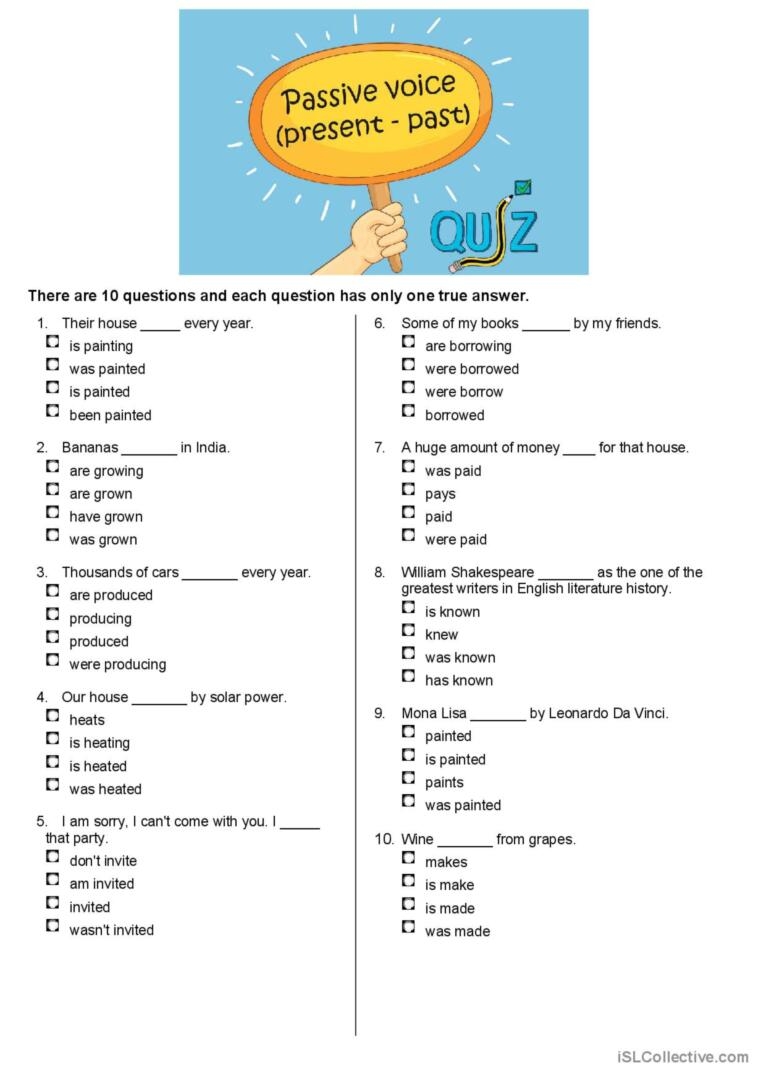Understanding and practicing the passive voice in grammar is essential for improving writing skills. The passive voice is used to emphasize the action rather than the subject of a sentence. It is important to know how to properly form and use passive voice sentences to communicate effectively.
Many people struggle with using the passive voice correctly in their writing. By practicing exercises that focus on the passive voice, one can become more confident in using this grammatical structure. These exercises help to reinforce the rules and patterns of passive voice usage.
Grammar Passive Voice Exercises
1. Rewrite the following sentences in the passive voice:
a) The teacher is explaining the lesson.
b) They have already completed the project.
c) She will announce the winner tomorrow.
2. Identify whether the following sentences are in active or passive voice:
a) The book was written by a famous author.
b) Sarah baked cookies for the party.
c) The car was washed by my brother.
3. Fill in the blanks with the correct passive voice form of the verbs:
a) The cake _______ (bake) by my mom.
b) The report _______ (submit) by the deadline.
c) The keys _______ (lose) by John yesterday.
4. Write a paragraph using at least five passive voice sentences to describe a recent event or experience.
Practicing these exercises will help improve your understanding and usage of the passive voice in grammar. By becoming familiar with the rules and patterns of passive voice sentences, you can enhance the clarity and effectiveness of your writing. Keep practicing and incorporating passive voice exercises into your language learning routine to see improvements over time.
In conclusion, mastering the passive voice in grammar is a valuable skill that can benefit your writing in various contexts. By regularly practicing exercises that focus on the passive voice, you can strengthen your understanding and usage of this grammatical structure. Remember to apply what you have learned in your writing to further enhance your language skills.
